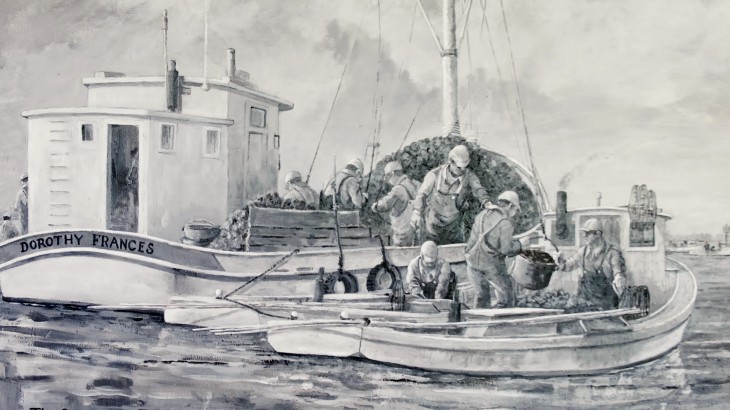This is another piece of istory in the little community of Tilghman, MD and elsewhere on the Chesapeake Bay & Choptank River. The big powerboat is or as the Commercial Watermen called it, a buy boat. These boats would come from Crisfield. Maryland, to purchase oysters for the shucking houses.
These boats would be purchase oysters from watermen operating tonging and dredge Boats. Sometimes staying as many as three or four days before getting a load of oysters to take down the bay for processing. As many as three or four buy boats would be here at one time. Usually they would pay more money per bushel so they could get a quick load.
They could easily carry 500 to 1000 bushels of oysters in the hole and on their decks. The weather was cool, so there was very little chance of spoilage. Hey would anchor the boats in a sheltered harbor. Poplar Island was a good place, close to all the good oyster bars and offering a safe anchorage. Some would anchor in the Choptank. In addition there were several shucking houses on Tilghman. They bought oysters in a metal bushel tub, and always paid in cash.
This picture shows two boats unloading their catch for the day. They would unload from both sides, taking out four boats at a time. Oyster season in those days started in September and ended in april. In the 19050’s and 19060’s one man and a culler could catch as many as 30 to 40 bushel per day. Weather permitting, as many as three men could and would work on one boat. When the weather got bitter cold, with plenty of ice around, the tongers would take as many as five or more men.
This industry supported a lot of families. This was very hard work, as you can see some of the rakes to catch the oysters were 16 to more than 30 ft long. All tonging was done by hand. I have tried to take this picture back to those early days when I was a young man. You will see no more of this on the Chesapeake Bay or Choptank.
They now have buying station on shore, restrictions on the number of bushels, time limit, etc. Of course as of today our oyster industry is devastated, due to pollution, and two very harmful diseases that have happened over the years. Of course most of the shucking houses have closed. Getting people to open the oyster is almost impossible.
